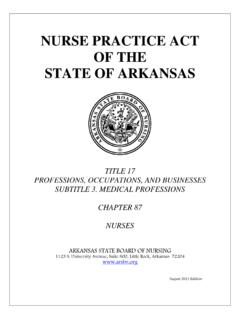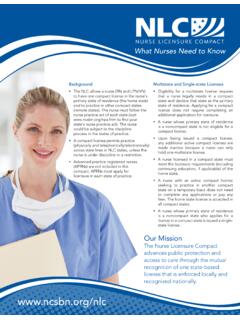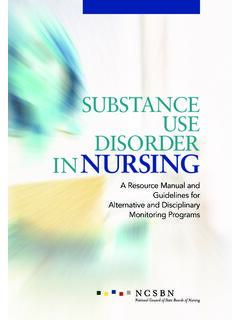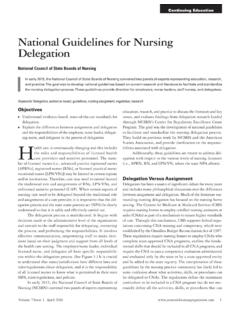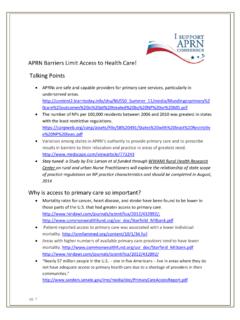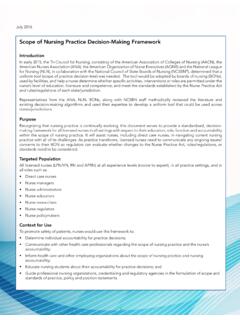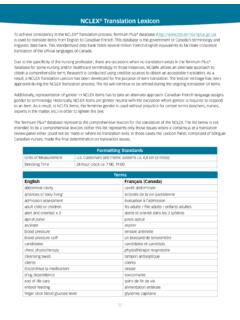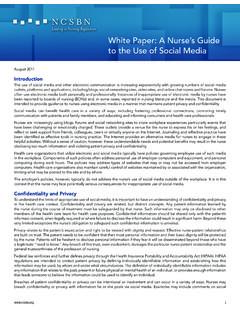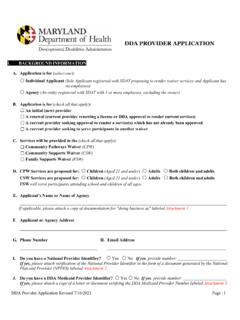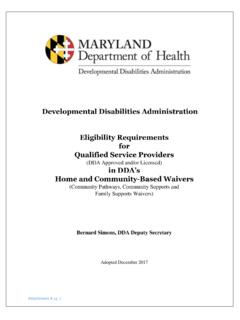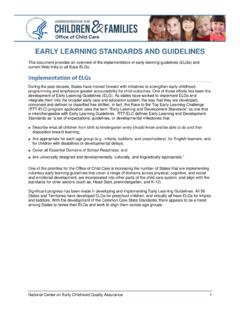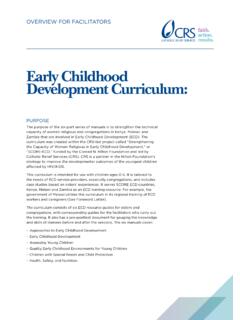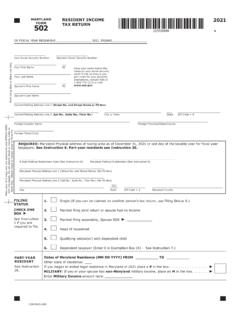Transcription of The Safety and Regulation of Medication Aides
1 18 Journal of Nursing RegulationNursing assistive roles were designed to relieve regis-tered nurses (RNs) of some less complex tasks, so they could concentrate on more complex tasks, leading to increased quality of care (Quallich, 2005). This article investi-gates the Safety and authorized duties of one type of unlicensed assistant, the Medication aide, also known by other titles, in-cluding Medication assistant, trained Medication employee, and Medication technician. A review of the academic literature on Medication -aide Safety and an exploratory review of Medication -aide regulations are presented.
2 Review of the LiteratureResearch suggests that Medication Aides are capable of safely administering oral, topical, and some parenteral medications; that is, no evidence suggests that Medication Aides have higher error rates than licensed nurses. For instance, Scott-Cawiezell and colleagues (2007) examined differences in Medication error rates and frequency of distractions or interruptions among RNs, licensed practical nurses (LPNs), and certified Medication techni-cians/ Aides (CMT/As). In five nursing homes, 3,101 doses and 93 omitted doses were observed.
3 Observations included 44 medi-cation administrations for 907 resident encounters over 4,803 minutes. On average, a Medication administration involved 73 medications and took an average of 113 minutes. RNs (n = 8) had an error rate of ; LPNs (n = 12) had an error rate of ; and CMT/As (n = 19) had an error rate of With wrong-time errors removed, RNs had the largest percentage of errors ( ); however, no significant differences existed among the three groups. The researchers concluded that CMT/As had fewer interruptions and distractions and suggested that the study provided initial evidence to suggest that CMT/As were safe for routine Medication administration.
4 In a similar study, no significant differences in error rates were found by level of credential in long-term care facili-ties (Arizona State Board of Nursing, 2008; Randolph, 2008; Randolph & Scott-Cawiezell, 2010). Before the introduction of Medication Aides , research nurses observed RNs (n = 7) and LPNs (n = 31) delivering 3,039 medications. Six months after the introduction of Medication Aides , the researchers observed RNs (n = 2), LPNs (n = 16), and Medication technicians (n = 7) delivering 2,521 medications. Before the introduction of medi-cation Aides , error rates were as follows: RN ( ) and LPN ( ) with a mean error rate of and no statistical differences between groups.
5 Six months after the introduction of Medication Aides , error rates were as follows: RN ( ), LPN ( ), and Medication technicians ( ) with a mean error rate of and no statistical differences among groups. Young and colleagues (2008) conducted a study to describe the types and potential clinical significance of Medication admin-istration errors in assisted-living settings. In 12 settings, 29 Aides were observed during 56 Medication passes on day and evening shifts giving medications to 510 residents for a total of 4,866 Medication administrations.
6 The average error rate was Without wrong-time errors, the average rate dropped to The average error rates for specific types of errors were as follows: Wrong time ( ) Wrong dose ( ) Omitted dose ( ) Extra dose ( ) Unauthorized drug ( ) Wrong drug ( )Only three errors were rated as having potential clinical significance. The researchers concluded that given their level of training and preparation and that the bulk of the medications were low-risk and routine, Medication Aides generally did well ( , risks appeared to be minimal) with Medication adminis-tration.
7 Overall, these studies supported the Safety of medica-tion Aides . However, caution should be taken. RN, LPN, and The Safety and Regulation of Medication AidesJill S. Budden, PhDA review of the literature on Medication error rates among Medication Aides is presented, followed by an exploration of Medication -aide regulations regarding oversight, applicant requirements, training, testing, continuing education, work setting and supervision, and role limitations. The results show the wide variability in the roles and regulations of Medication Aides .
8 The issue of more uniformity in the Regulation of Medication Aides is 19 Volume 2/Issue 2 July 2011medication-aide sample sizes were often small; hence, power was not sufficient to reach statistical significance. Additionally, the studies did not control for the differences in the types of medi-cations administered by Medication Aides and licensed nurses. Finally, the Medication -aide role is not as clear-cut as other patient-care positions. Job descriptions, training, testing, and supervision may vary among and within states.
9 Hence, although limited conclusions may be drawn about Medication -aide Safety where the studies took place, caution should be taken when ap-plying broad conclusions to other states with different medica-tion-aide regulations. An exploratory analysis of the variations in Medication -aide regulations was conducted to help illustrate these state-by-state Collection In 2009, the author conducted an exploration of Medication -aide regulations by state and jurisdiction by reviewing and document-ing information from state websites and legislation and by asking key contacts to review and answer questions about Medication -aide regulations in their state.
10 Given the methods for obtaining data and ever-changing state legislation, all results should be interpreted with caution. The purpose of the data presented is to provide a much-needed snapshot of Medication -aide the 50 states and the District of Columbia, 17 did not have Medication Aides , and 34 did (see Figure 1). Of the 34 states, key contacts in six did not respond, could not be reached, or did not provide enough detailed information for the majority of ques-tions. Overall, the 34 states varied widely in the implementa-tion of their programs, and some states had more than one type of Medication -aide personnel.
